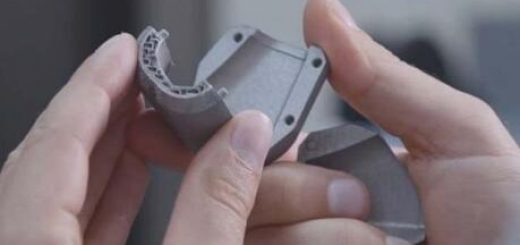The Future of Orthopedic Surgery Will Come Out of a 3D Printer
The incorporation of additive manufacturing into the surgical space is often viewed as a fresh revolution in the surgical space. That’s not altogether unreasonable — notable innovations are still being introduced on a regular basis — but there are manufacturers that are old hands at developing 3D printing solutions.
“We’re talking about new and innovative technologies, but we have been doing this for 28 years,” says Brigitte de Vet, vice president of the medical unit in Materialise.
Several different industries are served by Materialise. In healthcare, the company has a particular skill for taking medical images and turning them into useful 3D models. These models can be employed in the surgical planning phase, and Materialise also develops patient specific instruments, implants, and devices. A global partnership with DePuy Synthes was recently forged, with Materialise providing shoulder guides and other planning solutions.

Image Credit:Materialise
The evolving needs of patients make additive manufacturing an especially useful tool. An aging population of patients means a greater prevalence of chronic conditions. In orthopedics, complicated revision surgeries are becoming more common.
“There’s a higher pressure on finding new ways of treating these more complex patients,” notes de Vet.
Because of the added challenge inherent to revision surgeries, it is extremely difficult to develop a standardized approach. That dilemma hampers ongoing attempts to build efficiency into the process. Additive manufacturing can help because it provides an effective avenue for presurgical planning.
Since 3D printing techniques aren’t automatically part of the physician’s toolbox, companies such as Materialise need to find ways to instill greater comfort with the technology in the field.
“We believe that part of our role is to educate the markets and people around what our products can do,” de Vet says.
Materialise offers summits where healthcare providers can come together to shape an understanding of the parameters and possibilities of additive manufacturing solutions. There are also smaller learning events scattered across the calendar.
“And we work with a lot of partners to share our knowledge, because we believe this technology needs to get out to many patients to impact lives,” explains de Vet. “That’s what we’re there for. And sharing and spreading our knowledge is part of our DNA.”
There have also been efforts to introduce additive manufacturing into the curriculum of medical schools, ensuring the next generation of surgeons has an adeptness with the technology from the beginning.
Even before that day comes, there’s another subset of individuals in the healthcare equation who are driving conversions: patients. Equipped and empowered to do their own research into the latest and greatest options, patients increasingly advocate for additive manufacturing solutions.
“The trend that patients are informed is going to continue,” de Vet insists. “The current generation of patients is very comfortable with researching and going to find out for themselves.”
This shift in patient knowledge only changes so much. It’s still incumbent of the surgeon to determine the best approach for any given procedure. The advances offered by additive manufacturing lead to an uptick in the number of options and a greater range of information available to help guide practitioners to the ideal course of care.
“Technology will give more tools for the surgeon to know what the clinical evidence is on certain indications and certain cases,” says de Vet. “If I look 10 years back on the orthopedics industry, we were all about these physical things, like the implant. If you look now, a lot of the innovation is about the whole patient flow and the whole patient experience.”
The improvements available lead straight to the goals that everyone in healthcare is hoping for: better clinical outcomes and improved budgetary efficiencies. By using additive manufacturing to implement a more robust course of surgical planning and develop exactly the right tool, healthcare providers can find their way to an approach that may not be all that new, but is still truly transformative.
Source:ECN




Recent Comments